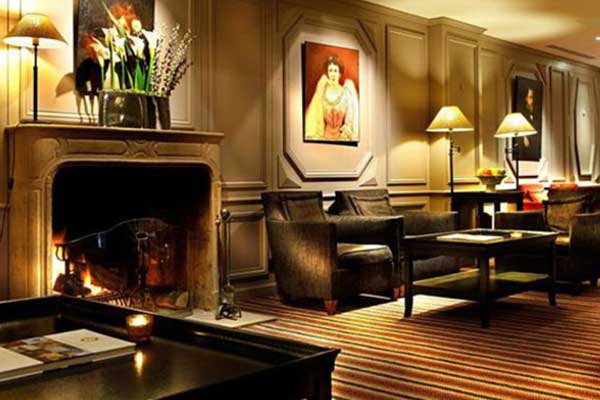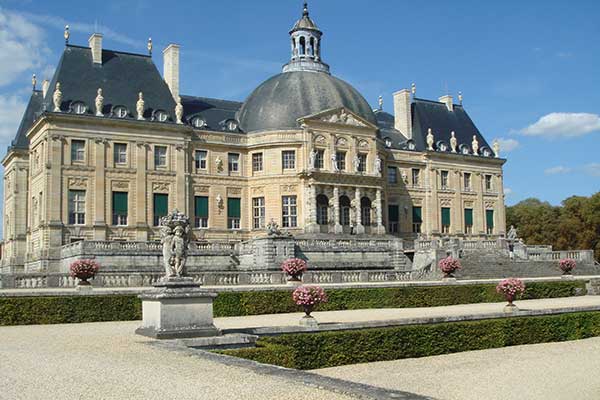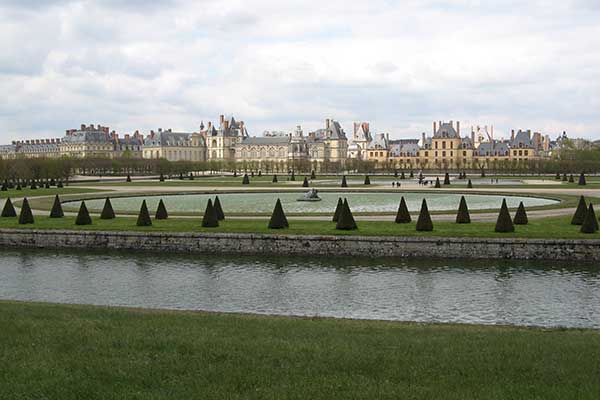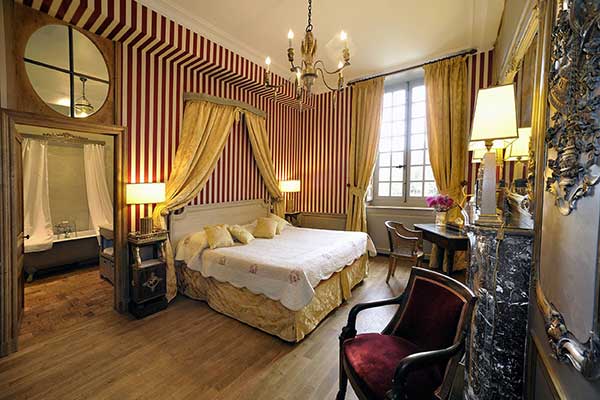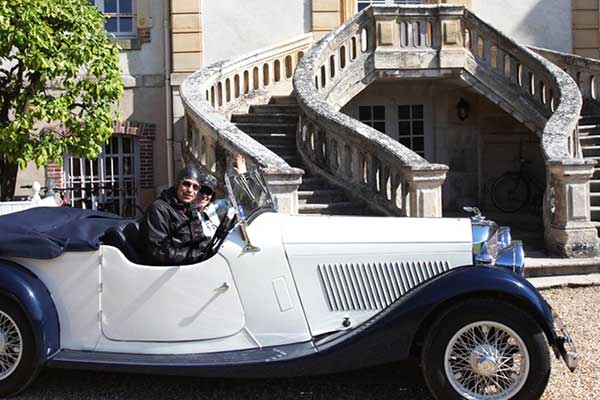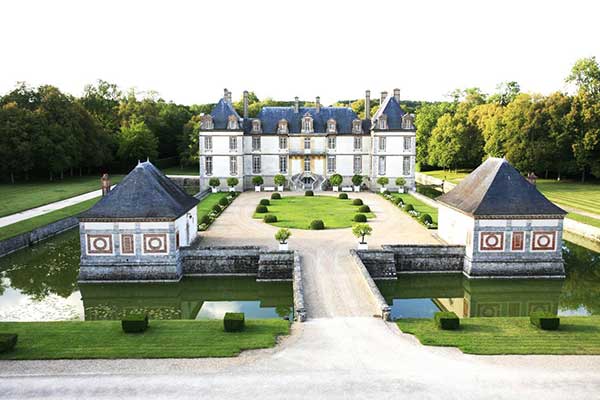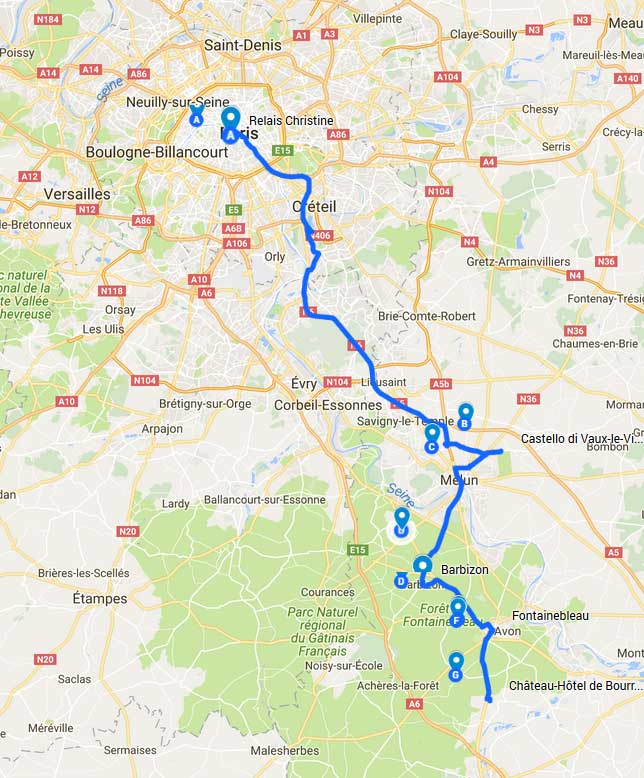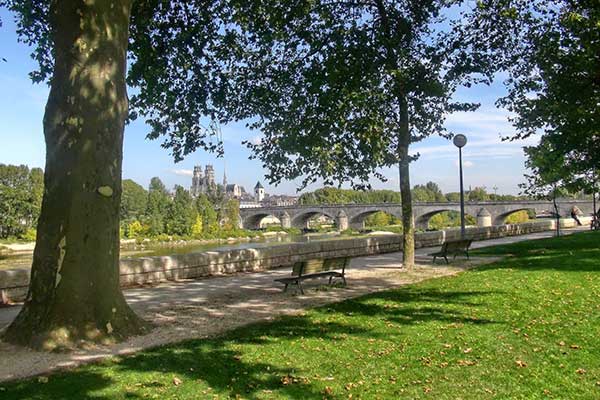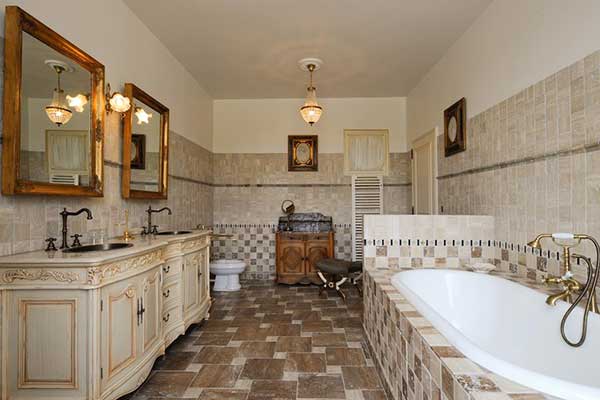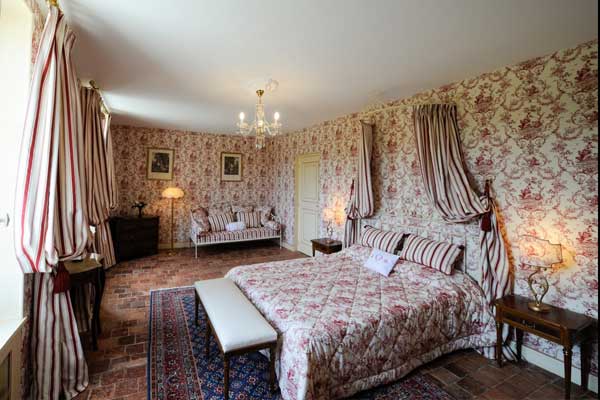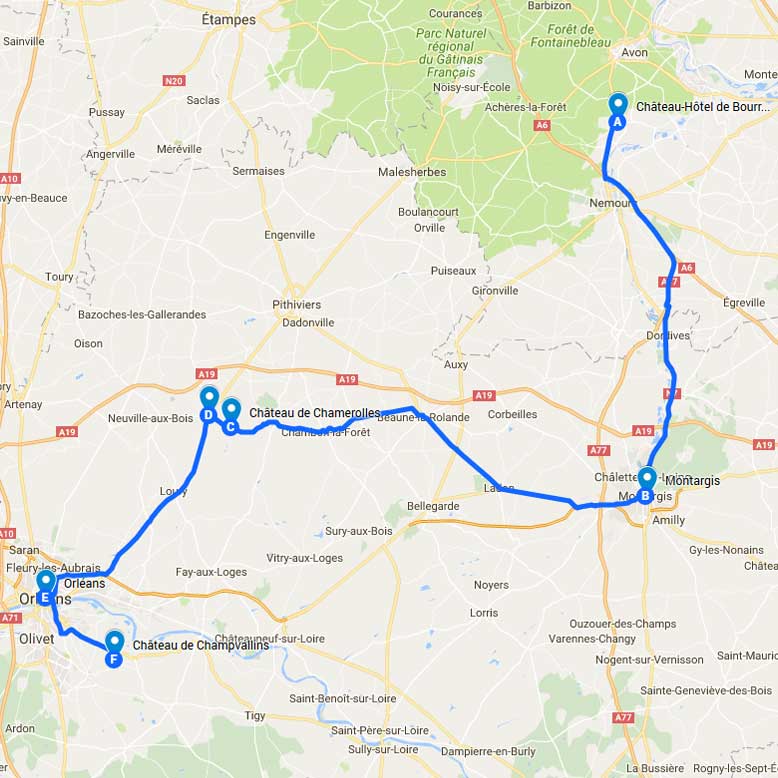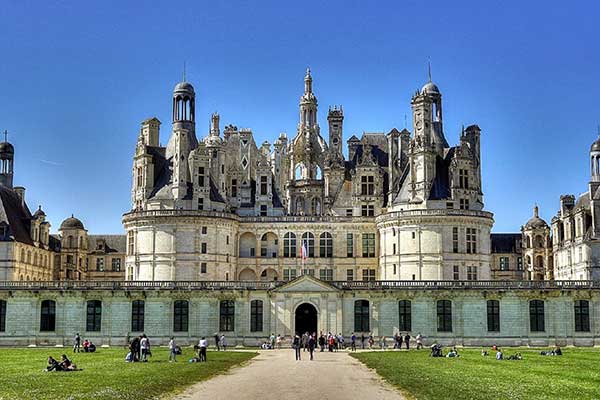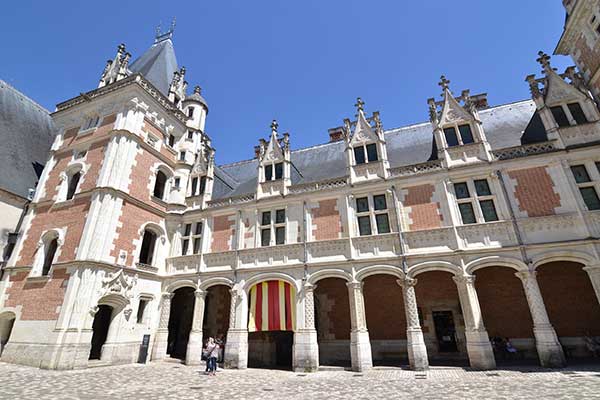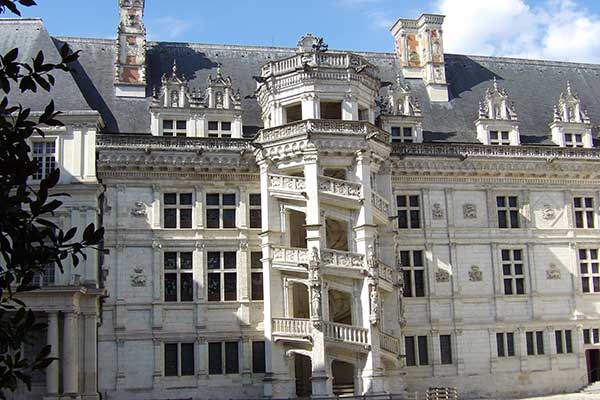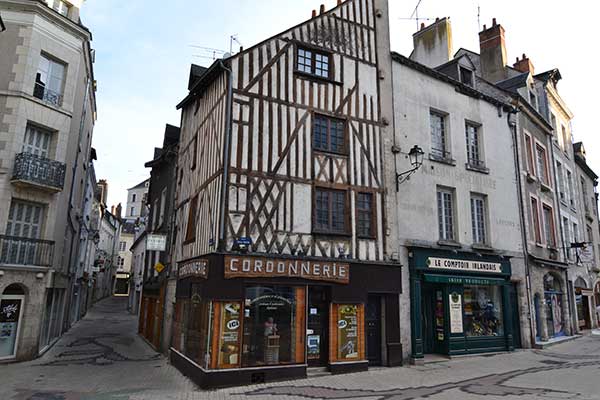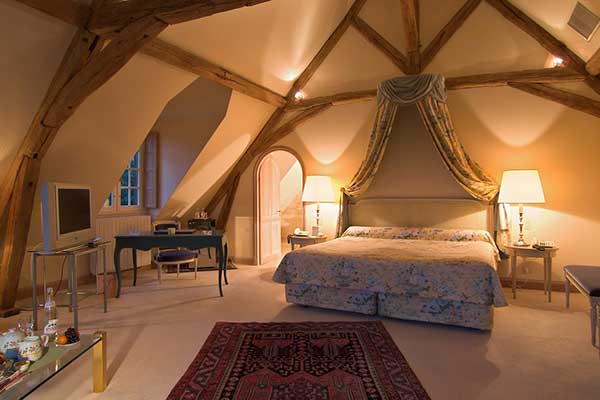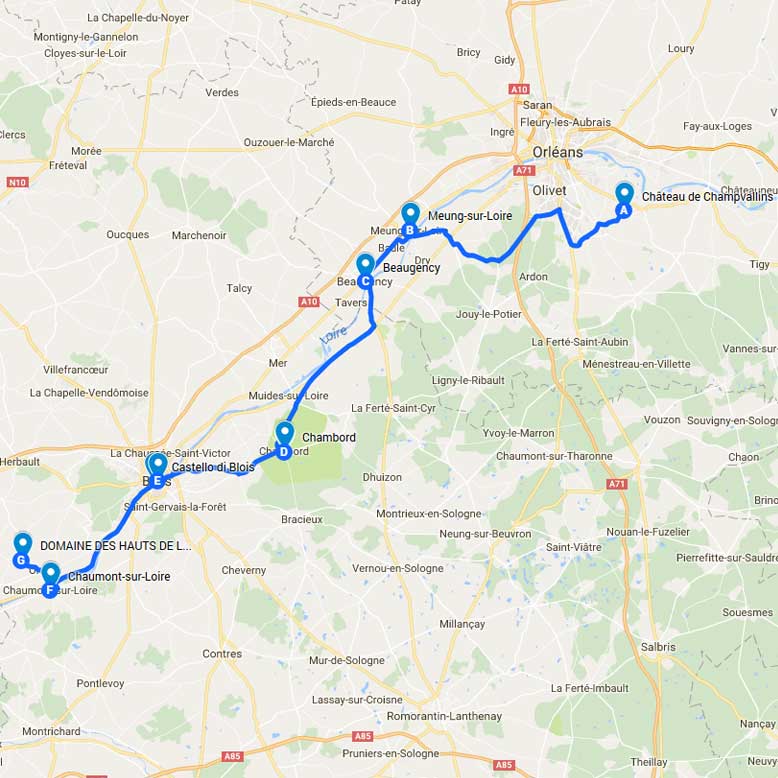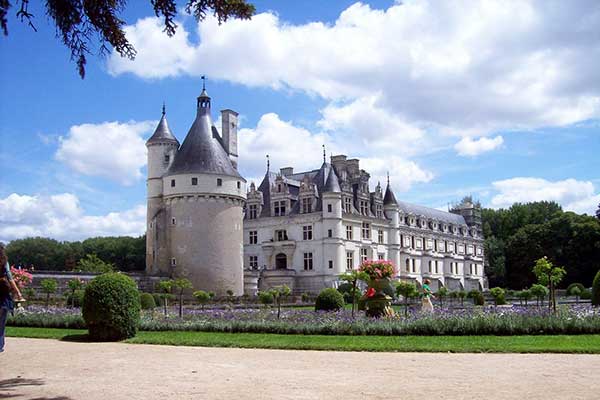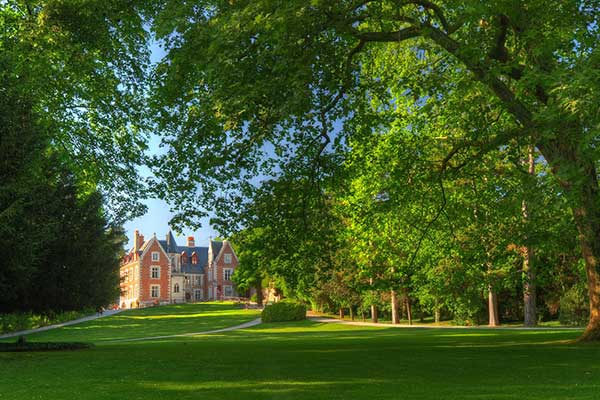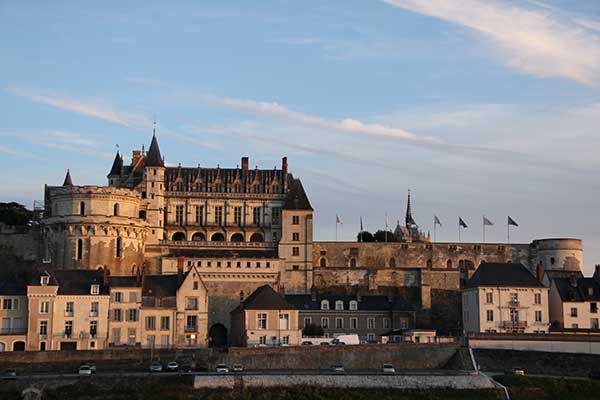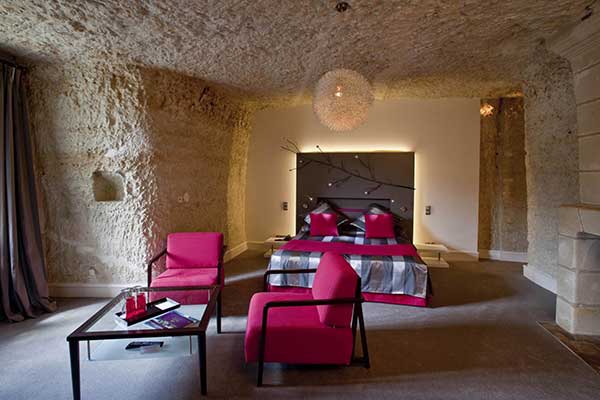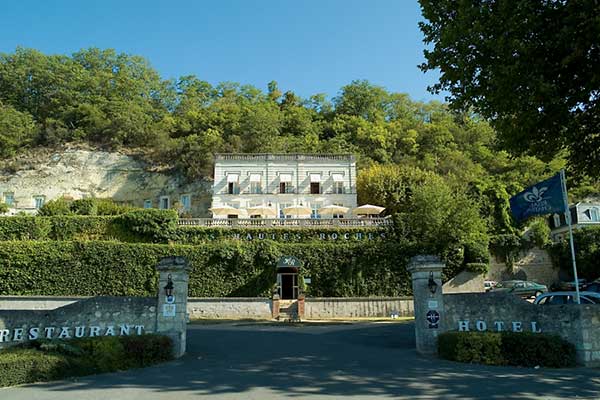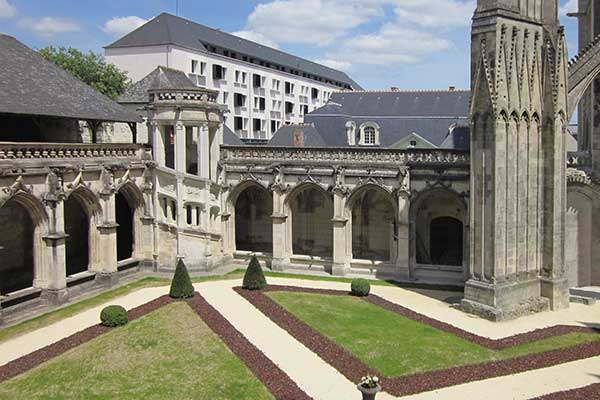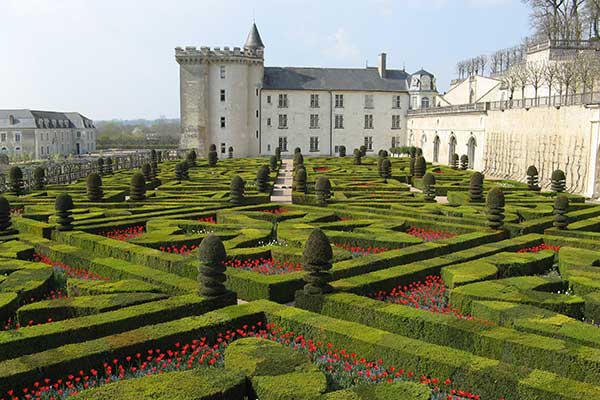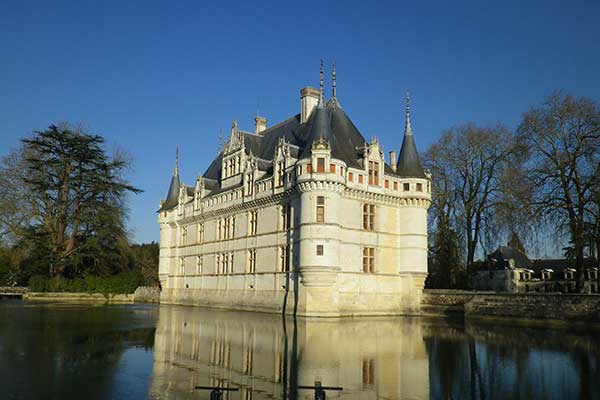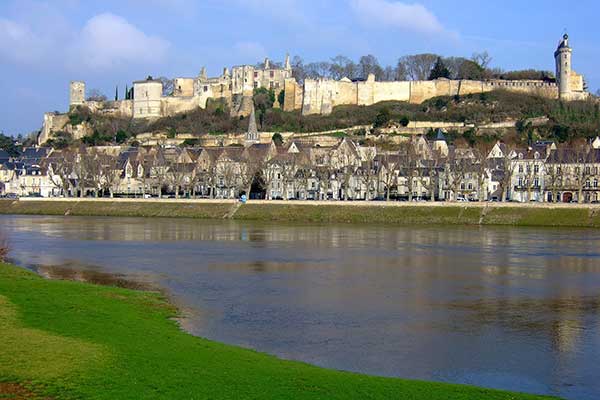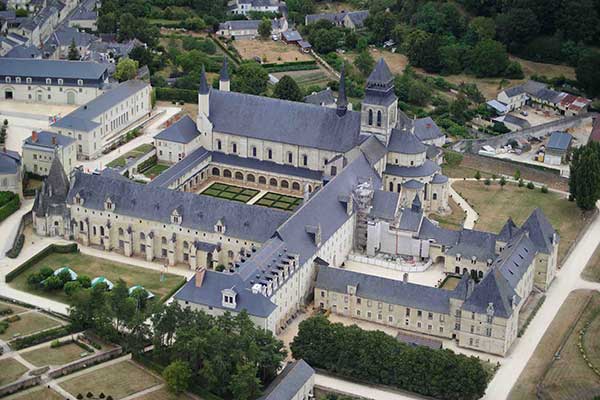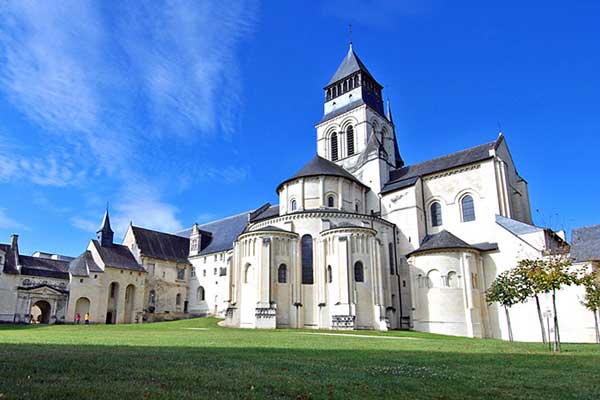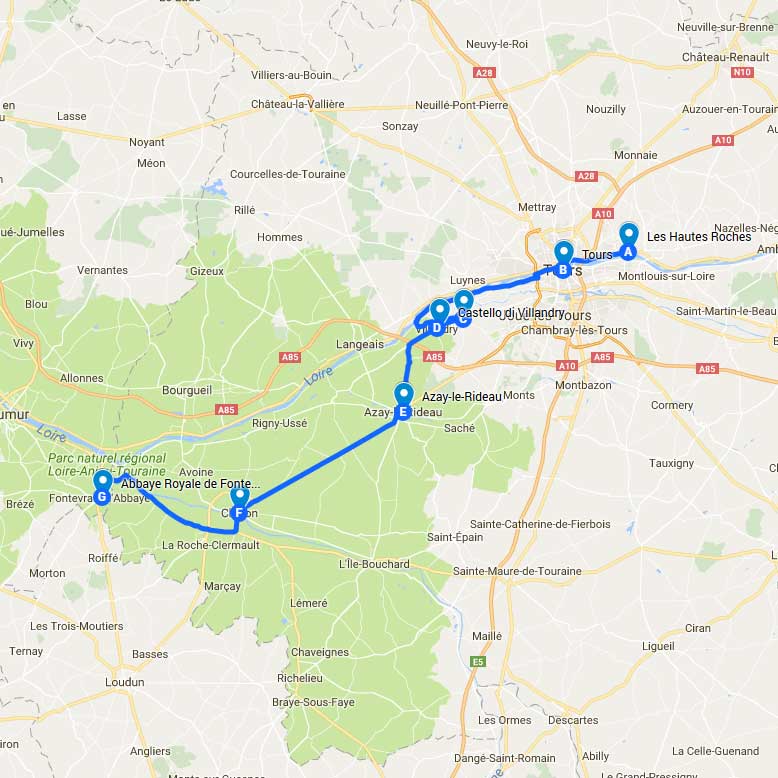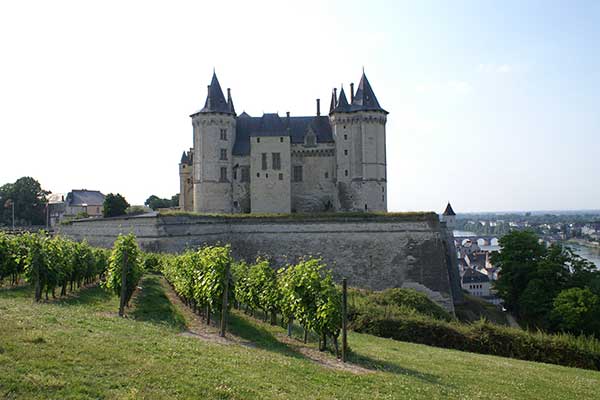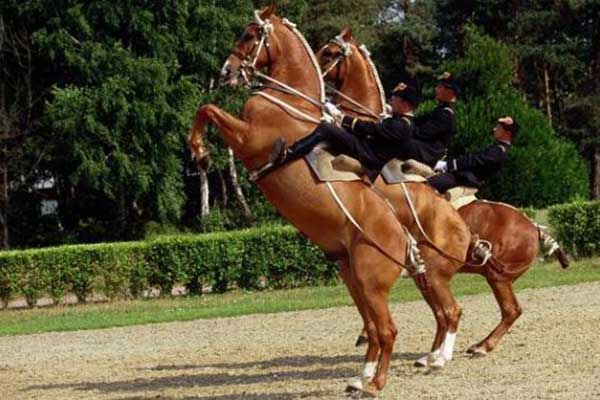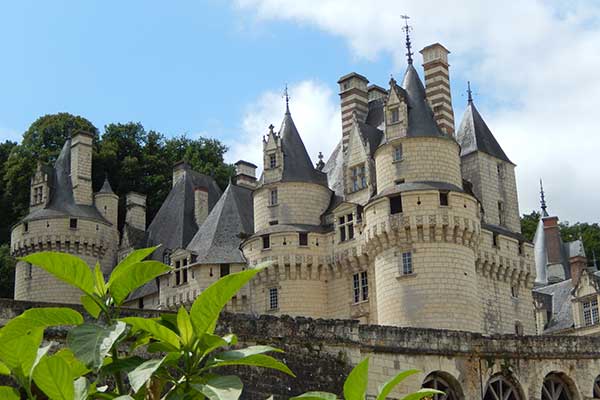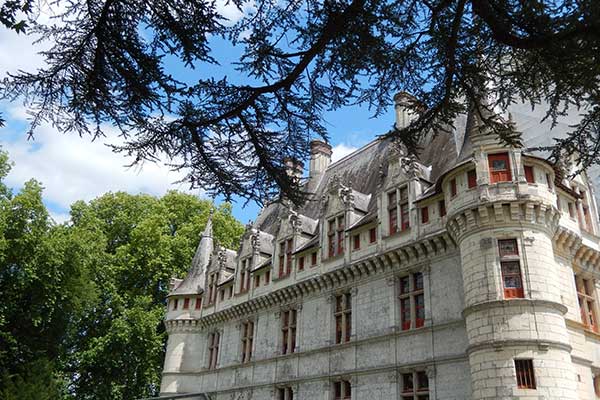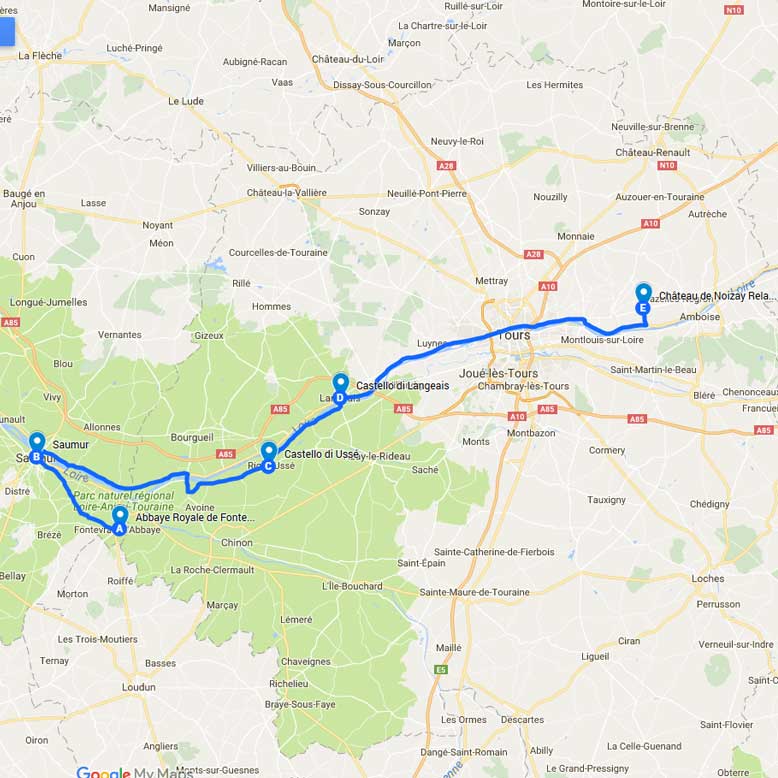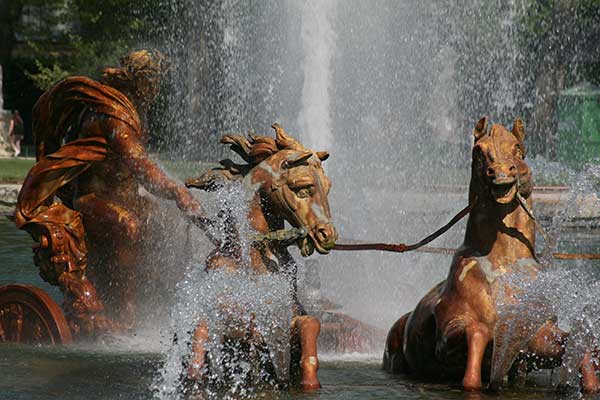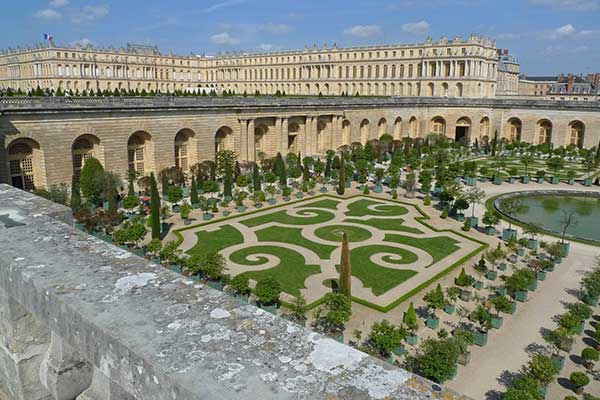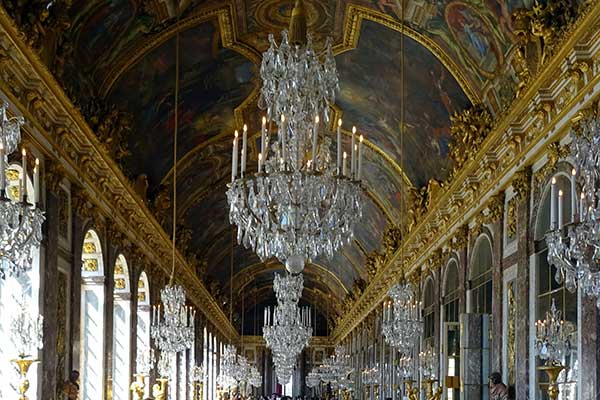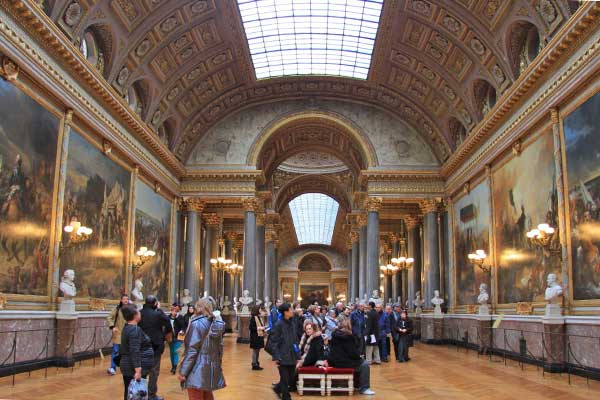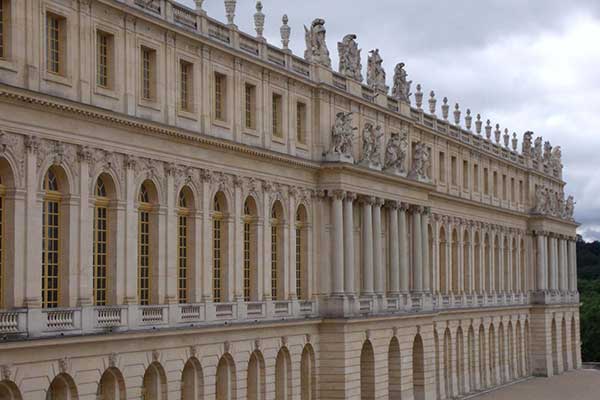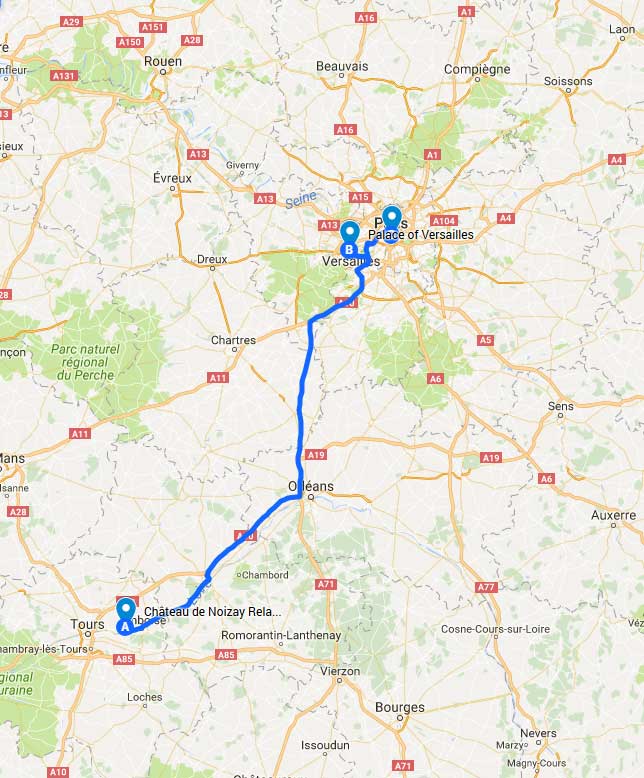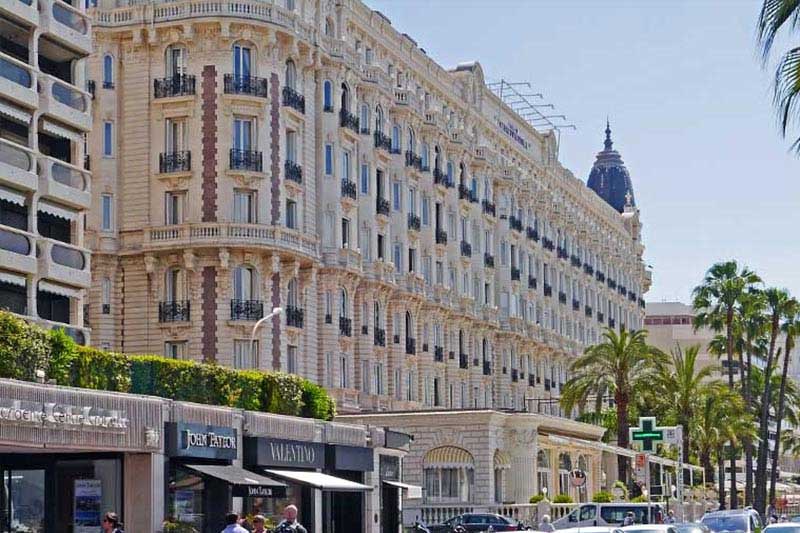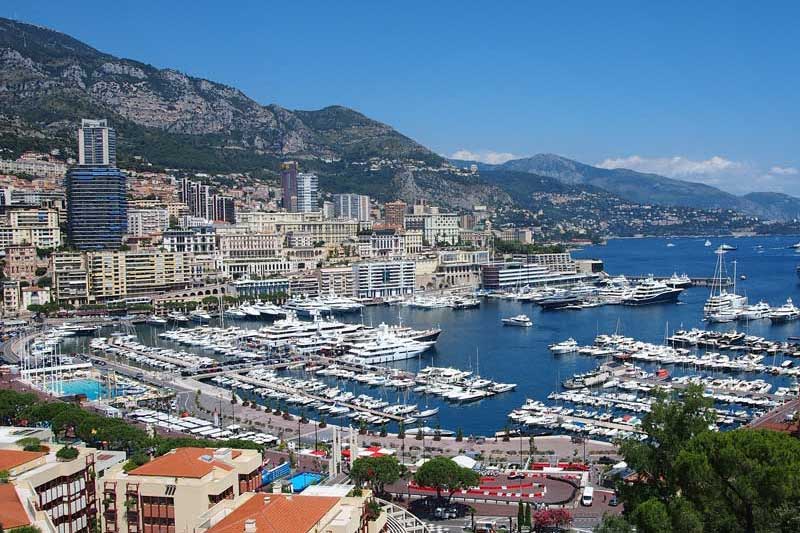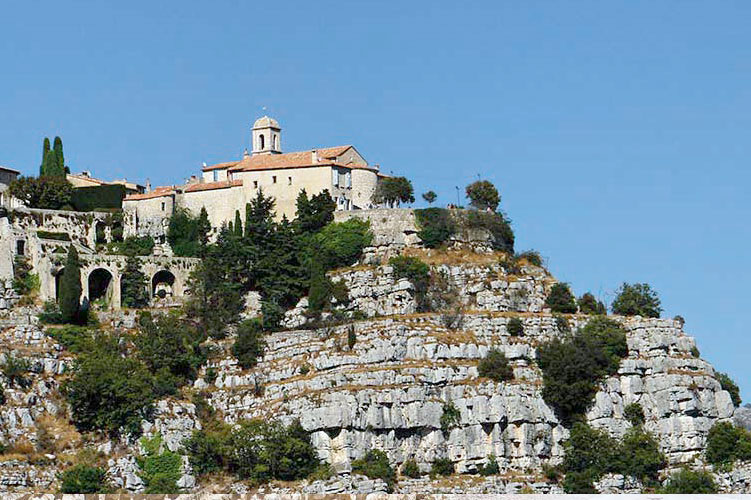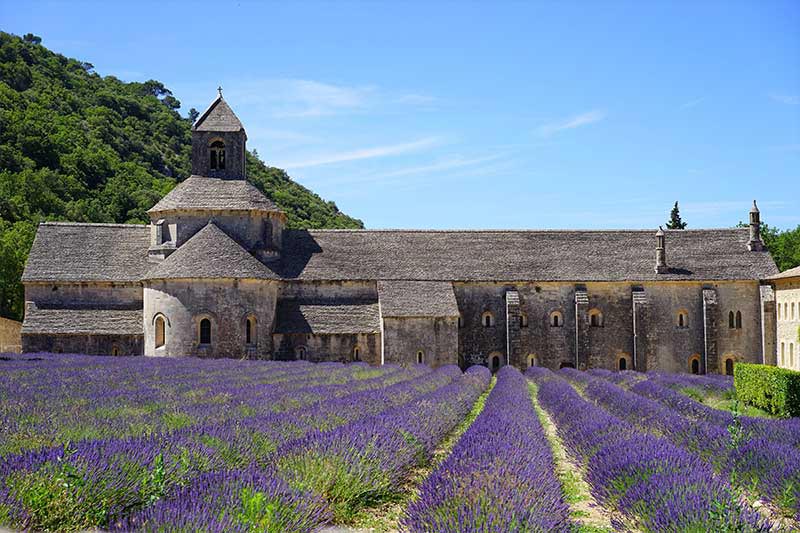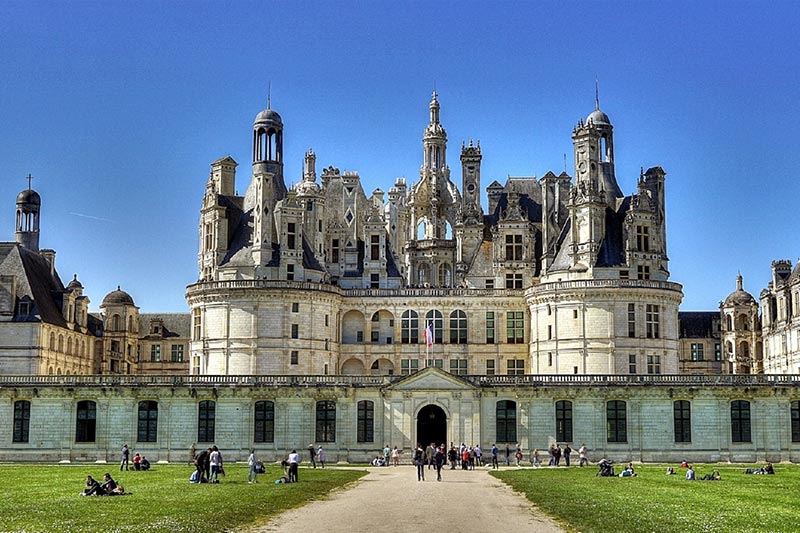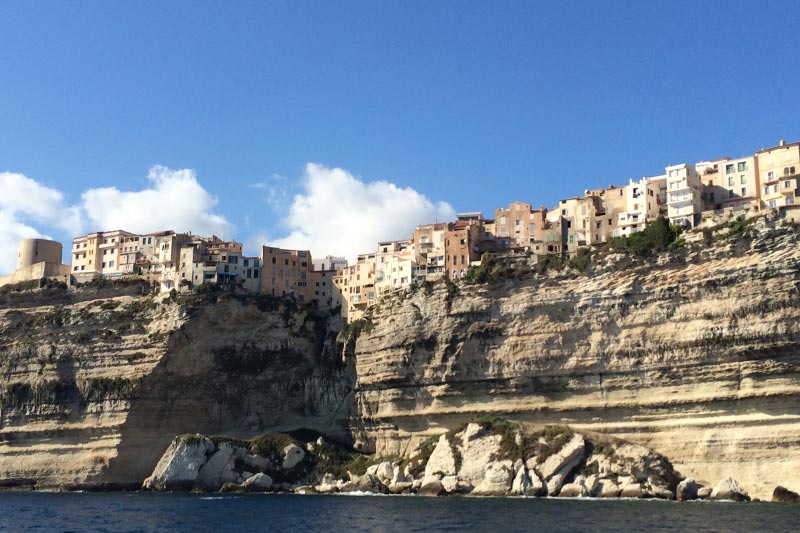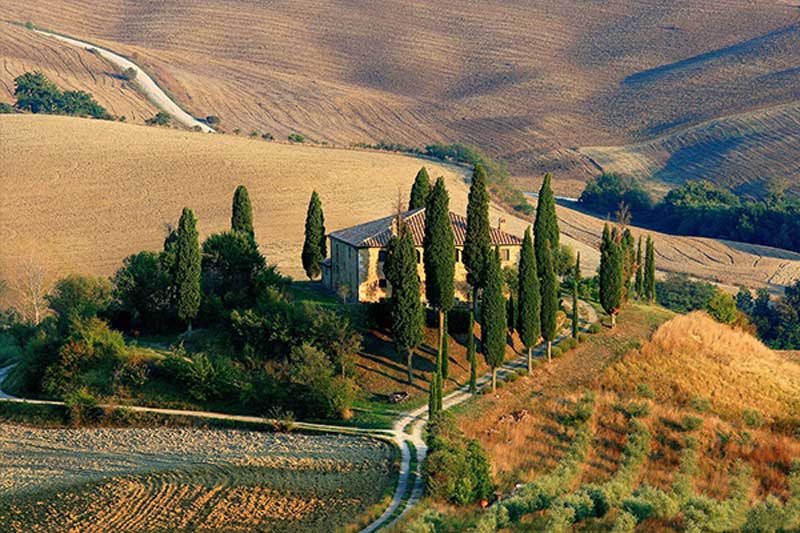Example of what we can create for you.
Castles of the Loire Valley
From Paris to Loire Valley
An epicurean heaven, Henry James described the Loire as ‘the land of Rabelais, of Descartes, of Balzac – as well as good dinners and good houses’ in his book A Little Tour in France. By ‘dinners’ he was no doubt referring to the region’s superlative food and wine. The sweetness of life in the Loire Valley has long been renowned – as proof, there have been royal residences here since the Middle Ages – and there is still an abundance of good things: fish from the Loire, game from acres of forest, excellent charcuterie from Tours and famed goat’s cheeses from Chavignol.
Paris
Our trip starts in Paris, the most romantic city in the world.
The “rendez vous” cocktail, presentation of the tour, introduction of the tour coaches or assignment of the cars takes place in Relais Christine (if available), our favorite hotel in Paris which is in one of the best locations, in the heart of Saint-Germain-des-Prés, where we will spend the night.
Early morning, after a rich breakfast, we start our trip. The main destination today is Fontainebleau and his Castle.
Château de Vaux le Vicomte
On the way to the forest we cross The Castle of Vaux-le-Vicomte, a 17th century magnificent property, built in 1661 by the visionary and unlucky owner Nicolas Fouquet who transformed and old manor into a masterpiece whose château and gardens still feature among the most beautiful in France. The chateau deserves a stop and we’ve planned a tour of the gardens with an electric golf car.
Before arriving at Fontainebleau, we cross Melun and Barbizon, those charming and peaceful villages nestled on the edge of the Fontainebleau forest.
Château de Fontainebleau
A few kilometers further we get to the Royal Castle of Fontainebleau, ‘the true home of kings, the house of all centuries’ as Napoleon used to describe this unbelievable mix of classical Renaissance style palace declared Unesco World Heritage Site in 1981. The palace has been improved continuously throughout the centuries. The horse-shoe shaped staircase, an iconic feature of the palace, for example, is a work added during the reign of King Louis XIII.
After a walk in the courtyards and the gardens we get into the castle where we have a reservation for cocktails and a private tour of the magnificent Grand Apartments, which are usually closed to the public and only opened for private visits.
For the night we plan to experience the magic of a stay in a charming French historically classified castle, The Château de Bourron (if available), a magnificent and elegant private property built in the early XVIIth century on the location of a feudal fortress.
Montargis
We leave the forest in the early morning and drive southward along the Loing (tributary of the Seine), enjoying the road and the beautiful scenery. After crossing nice little towns like Nemours, Souppes and Fontenay, we get to Montargis, the ‘Venice of the Gâtinais’. It has earned this nickname thanks to the 131 bridges and footbridges straddling many canals. We invite you to soak up the charm of this town with its half-timbered houses and Renaissance residences, dominated by the vestiges of its old château.
On the way to Orleans, after a stop in the historical hamlet of Chilleurs aux Bois, we visit the Castle of Chamerolles, built between 1500 and 1530 by Lancelot 1st Du Lac, chamberlain of Louis XII and governor of Orléans. In the 1970’s the castle was on its way to go to rack and ruin. Luckily, in 1987, this wonder of architecture became part of the Loiret local heritage. The County Council then undertook an ambitious restauration of the castle. Most of its attractive Renaissance look style has been restored. Nowadays, Chamerolles is dedicated to the history of perfume making and associated areas such as hygiene.
Orléans
At the end of the royal route from Fontainbleau we’ll discover Orléans, the aristocratic city on the Loire where, during the Hundred Years’ War, the 17-year-old French peasant Joan of Arc lead a French force in relieving the city of Orleans, besieged by the English.
Start exploring the city from Place du Martroi, a large open square with the 19th century statue of Joan of Arc surrounded by numerous imposing buildings, following Rue d’ Escures towards the east and taking a look at the Hotel Groslot in Place de l’Etape, a very ornate and distinguished 19th century red brick building with a fine interior of the period. Turning south along the Place de l’Etape we reach the Cathedral Sainte-Croix, the most important historic monument in the city, a 17th century gothic style cathedral with impressive stonework ornamentation. During some summer month there is an amazing light and sound show.
Now we walk straight along the Rue Jeanne d’Arc to Place Charles de Gaulle where we can visit the historic ‘house of Joan of Arc’. Continuing south to the Loire and the impressive stone bridge, we take the promenade along the river banks along Quai du Chatelet to explore the historic center of Orleans, a large area between the river and the cathedral.
At the end of this exciting day, we are welcomed in the peaceful Château de Champvallins , a unique guest house in the Loire Valley (if available).
We are now approaching the area of the Loire Valley. On the way we meet two medieval towns with a rich past, Meung-sur-Loire, with one of the oldest castle of the area and Beaugency with a rich architectural heritage, as well as the Château de Dunois dating from the 15th century.
Château de Chambord
Crossing the Loire and heading south we reach the Reserve de Chambord, a paradise for nature lovers and architecture enthusiasts alike. Absolute jewel of the Loire Valley, in the heart of a game-filled forest, looming up from the Sologne swamp land, is the Château de Chambord, highly symbolic of French Renaissance. The château was born from a dream of the young and ambitious King François I, a true monumental folly. In his cosmopolitan court he invited numerous Flemish and Italian artists, including Leonardo da Vinci, who probably inspired the unknown architect particularly in the design of the famous double staircase.
Designed not to be a permanent residence but merely a hunting lodge, the Castle is immersed in a wooded domain of 5.440 hectares, surrounded by a stone-wall 32 km long – making it the largest enclosed forest park in Europe, rich of deer and wild boar.
We’ll enjoy a traditional horse-drawn carriage ride of 45 minutes outside the château, taking forest tracks which are normally closed to the public.
Blois
Only 20 minutes of driving and we find one of the France’s ‘Ville d’Art et Histoire’, a protected Historic Town, the city of Blois.
From Pont Jacques Gabriel, dating from the 18th century, a good starting point from which to explore the town, you have a lovely view of Blois. We can simply follow the streets as they meander through the medieval center, admiring the carefully protected historical buildings, stopping of course for a coffee at a street side cafe.
The Royal Château de Blois, favorite residence of 7 kings and 10 queens of France is a concentration of French history’s great architectural periods as it can be seen in its Medieval, Gothic, Renaissance and Classical facades. Magnificently restored in the 19th century, the Royal Château is fully furnished and also houses the Blois Fine Arts Museum with masterpieces by Ingres, Rubens and Boucher. Furthermore, thanks to his position on a promontory in the heart of town, the Château boasts one of the most beautiful views of the royal river and the ancient streets of Blois.
Domaine des Hauts de Loire (if available) welcomes us at the end of our day trip. Located on the wine road in the midst of greenery, the hotel is a haven where a cosy atmosphere dominates. We take the time to be charmed by this setting and enjoy a bucolic atmosphere to relax in the heart of nature. We’ll discover the delicious regional cuisine of Chef Rémy Giraud at dinner in the restaurant.
How exciting is the feeling to be in the heart of one of the most extraordinary historical areas in the world, a valley entirely declared an UNESCO World Heritage Site?
Château de Chaumont-sur-Loire
Just a few kilometers and we meet the first magnificence of the day, the Château de Chaumont, which overlooks the Loire Valley, fine example of the Gothic period’s defensive architecture as well as of the ornamental architecture of the Renaissance.
The Fortress, built around the year 1000 to keep watch and protect the city of Blois, has been razed to the ground and rebuilt in the next centuries but it was Charles II d’Amboise who turned it into an ornamental château in the Renaissance style, with sculpted decorations becoming the major feature of its outer façades.
Château de Chenonceau
Twenty kilometers southward and we cross the River Cher, tributary of the Loire, slow-flowing and rich of gardens of scented roses. In World War II, this river marked the boundary between free and occupied France.
Stop for a coffee in Montrichard, a very charming town dominated by a huge fortress, with a rich medieval history.
Driving along the Cher we get to the Castle of Chenonceau “Le Chateau de Dames”, indisputably the most beautiful and the most photographed of the Renaissance châteaux, exceptional site not only because of its original design, the richness of its collections, its furniture and its decorations, but also because of its destiny, since it was loved, administrated and protected by women, who were all extraordinary and who, for the most part have marked history. Its original design, in fact, was supervised by one Katherine Briconnet then added to by Diane de Poitiers and Catherine de’ Medici (wife of Henry II) and saved during the French Revolution by George Sand’s grandmother.
At Chenonceau Castle, the flower display in every sumptuously furnished room adds to its elegance. The room of Five Queens, the living room of Louis XIV, the grand gallery overlooking the River Cher, fabulous kitchens constructed in the piers of the bridge, the Green Cabinet of Catherine de Medici. Chenonceau Castle also has an exceptional museum collection of the paintings: Murillo, Le Tintoret, Nicolas Poussin, Le Corrège, Rubens, Le Primatice, Van Loo, as well as an extremely rare selection of Flanders Tapestries from the 16th century.
Château de Clos Lucé
Back to Loire Valley there is a small manor that is worth a visit: The Château du Clos Lucé. It was the residence of Leonardo da Vinci during the last three years of his life. Painter, inventor, engineer, scientific, humanist and philosopher, he tried to unveil the secrets of nature and physics. His heritage is still present in our daily life. The mission of the museum is to give an overview of the work of Leonardo to the general public. From the beginning to the end of the visit, we experience the funny feeling, that the genius was just there, just a moment ago.
Château d’Amboise
Even if tired we have to find some remaining energy to take a look at an emblematic monument and its landscaped gardens with one of the most remarkable panoramas of the Loire valley, the Amboise Castle. As a Royal residence in late 15th and 16th century under the Francis I reign the castle reached the pinnacle of its glory. Many men and women of letters from Europe as well as artists, like Leonardo da Vinci who was buried in the château’s chapel, were guest at the Court of Amboise at the sovereign’s invitation.
Rising up over the banks of the royal river, in the heart of Vouvray, the most famous wine area of Loire Valley, we reach our resort for the night, an 18th century manor house nestled against a cliff, lit up by the Loire Valley’s gentle light. Les Hautes Roches (if available) has 14 rooms, all facing South and overlooking the meandering Loire river. 12 rooms are sculpted into the rock as troglodyte caves, the 2 others are situated on the first floor of the manor house .
Tours
“Mini-Paris”, that’s how the locals describe their lovely and “bourgeois” city on the Loire where we spend a relaxing morning among the cobbled streets around the pedestrian ‘Place Plumereau’ in the old city, a carefully preserved jewel of late medieval architecture. We absorb the atmosphere in the shade of parasols and café-awnings among local residents, students and tourists conversing while sipping coffee or nursing glasses of sparkling Vouvray wine.
A little walk down rue Colbert and we appreciate the impressive Saint-Gatien-de Tours Cathedral leaping out of the city skyline. It has been classified as Monument Historique since 1862. The Cathedral has an exquisite façade. It has a long and troubled history having been burnt down several times and built and rebuilt between 1170 and 1547. Building the current one was a particularly slow and difficult project which led to a local saying: “… not until the cathedral is finished”.
A short walk from Saint Gatien, the Musée des Beaux-Arts occupies the former 17th/18th-century Episcopal Palace. The courtyard entrance harbors a living chef d’oeuvre: an enormous Cedar of Lebanon, planted in 1804 and now one of the largest in Europe. The museum houses a rich collection of paintings, sculptures and furniture, including works by Rubens, Rembrandt, Mantegna, Monet, Degas.
Château de Villandry
We’re now getting inside the Natural Regional Parc of Loire-Anjou-Touraine. We drive along the Loire enjoying the scenery and gently driving. Savonnierès is the first town we meet, famous for its petrified grottoes.
After a few kilometers we get to Villandry, a tiny village well-known for its Castle and the gardens that spread across three terraces and combine aesthetics, diversity, and harmony.
Château d’Azay-le-Rideau
We drive southward crossing Azay-Le-Rideau. Its small, lovely, 16th century, castle has conserved the elegance and grace of a Renaissance château. It seems to rise out of the River Indre, a tributary of the Loire.
A few kilometers from Azay, if so desired, we can visit the museum Musée Maurice Dufresne whith its impressive collection of vehicles and old-time machines from the 1850s to 1950s.
After a stop in Chinon, a most picturesque and romantic town with a great Castle and ancient sloping streets on the banks of the River Vienne, we get to the UNESCO World Heritage Site of Fontevraud Abbey, one of the largest surviving monastic cities from the Middle Ages. The King of England, Henry II, his wife Eleanor of Aquitaine, and son King Richard the Lionheart were all buried here at the end of the 12th century. During the French Revolution in 1789 it was disestablished as a monastery.
We’ll stay in the 4* Fontevraud L’Hôtel (if available).
Saumur
Saumur is one of the symbols of the Loire Valley; its turreted château with a majestic presence over the Loire is liberally used to illustrate the area’s appeal. The town definitely is worth a visit for a tour of the château overlooking the Loire, for a stop at a vineyard, or just for wandering the medieval streets for a perfect break.
Visit of the Cadre Noir team at the National Riding School in St-Hilaire St-Florent, on the western fringe of Saumur is an option. If lucky we can enjoy a sporadic public performance of “the ecuyers”, the master horsemen who each demonstrate a facet of horse training; the balance and choreography of the riders is astounding.
After a stop-off to one of the dozens of wine houses in St-Hilaire St-Florent, including Ackerman, Saumur’s oldest sparkling wine producer (established 1811) or Bouvet Ladubay which has some striking sculptures in its underground cellars, we head to the town’s crowning glory, the chateau on a bluff overlooking the river. It is a wonder it is there at all, having weathered all sorts of bad treatment from its time as a prison under Louis XIV and Napoleon. Now on summer evenings, a light-and-sound show plays out in the chateau grounds.
With Saumur we covered the most western town of the trip, now it’s time to cross the bridge and follow the Loire again.
Château d’Ussé
Château d’Ussé, overlooking the Indre Valley, is a very elegant castle built as a stronghold in the Middle Ages but developed over time to become a jewel of Renaissance architecture, then became a splendid residential home in the 17th and 18th centuries.
The tradition maintained at the Château Ussé is that this was the castle Charles Perrault had in mind when writing the fairy tale ‘La Belle au Bois Dormant’ in 1697 (‘The Sleeping Beauty’).
Château de Langeais
On the border between Anjou and Touraine we find the Château de Langeais which presents two exceptional châteaux: the Foulques Nerra Tower, one of the oldest in France built from 994 on the promontory overlooking the Loire by the powerful and feared Count of Anjou, and the Château of Louis XI built in 1465. He wished to have a building where, from the top of its towers and sentry walk, the right bank of the Loire could be kept under surveillance. Because of this, its majestic facade has a sentry walk, towers, and a drawbridge on the town side.
Continuing to drive along the Loire, we proceed beyond Tours to get to our night haven, the Chateau de Noizay (if availabe),an hotel-château by the banks of the Loire in the heart of Vouvray vineyard, between Amboise and Tours. the 19 rooms, immersed in the sounds of the 24 hectare park which surrounds the château, are decorated with fine materials and furnished with authentic, period furniture. The gourmet restaurant is in the hands of Chef Frédéric Collin who serves a sophisticated cuisine inspired by regional produce, the seasons, and locally-sourced meats, in perfect harmony with the surroundings.
As usual the last day trip is totally dedicated to the pleasure of driving. On the north bank of the Loire we head to Blois, Orleans and then northward to Paris.
Versailles
A trip among the most beautiful historic residences cannot exclude a stop in the Chateau de Versailles that tells centuries of history from Louis 13th in 1607 until the First World War through the reign of Louis XIV, Louis XV, Louis XVI and the French Revolution. Once a palace, now a museum it contains a collection of over 60,000 works spanning a very broad period and reflecting the dual identity of the Palace, as both a palace occupied by the kings of France and the royal court, and later a museum “dedicated to the glories of France,” inaugurated by Louis-Philippe in 1837.

